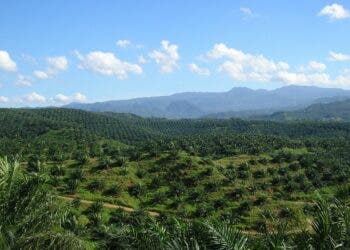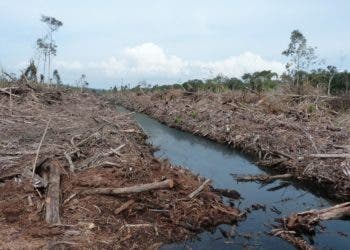Future generations may live in a world without the majestic Sumatran Tiger, as only two viable populations remain in the world, a new study reveals. Deforestation, especially for the palm oil industry, is the main culprit.

Things were bad enough for Sumatran tigers. Scientists estimated that just 618 of them remain as of 2012, but now, a new study shows that the situation is even worse. Those populations, the study found, are fragmented and isolated, with only two of the groups containing more than 30 breeding females. These small groups are unlikely to survive in the long term, and the Sumatran tiger (Panthera tigris sumatrae) is more threatened than ever.
“There are two forests that are still large enough to independently sustain tigers over the long and medium terms,” said Dr Luskin, who conducted the research as part of his PhD at the University of California, Berkeley.
The population numbers are so low that researchers actually identify tigers individually, by the unique stripes and patterns on their back. They logged habitat limits and population spread using hundreds of remote cameras triggered by movement.
New roads in Sumatra have fragmented habitats and put a lot of pressures on all animal populations, but deforestation and clearings are even worse. Tiger density has improved in undisturbed areas in Sumatra, but the problem is that very few areas are truly undisturbed.
There is some reason to be optimistic as the results are somewhat of a mixed bag, but it’s becoming more and more clear that if vegetation clearings continue as they have until now, then the tigers’ chances of survival are very limited.
Hungry for palm
The world just can’t seem to have enough of palm oil. It’s in your mascara, your laundry detergent and in pretty much every mass-produced pastry. Oil-palm plantations have savagely encroached diverse rainforests, and illegal oil-palm concessions are tipping the scale even further.
However, this issue won’t have a simple fix. Palm oil provides direct employment to 4.9 million people in Indonesia, earning the country over $20 billion a year. The local government and palm oil corporations have long claimed that the practice is sustainable and eco-friendly, but the facts seem to suggest otherwise. The practice is all the more lucrative because not only does the country generate revenue from palm plantations — but loggers also earn a lot of money from deforestation. Often, illegally.
“In behind them is often the selective loggers and the illegal loggers who go in and steal some of the high-value timber,” says Mason Campbell, a tropical ecologist at James Cook University.
According to Dr Campbell, the conservation status of forests can be downgraded after they have been logged, giving the industry a foothold to begin development.
“It’s bigger, larger, richer companies coming in, and they’re often — I’m trying to put this politely — intricately linked with the local government officials who’ve approved those roads,” he said.
“Once it’s a production area it’s a bit of a free-for-all for palm oil companies.”
Peter Holmgren, director general of the Indonesia-based Center for International Forestry Research, also says that illegal logging operations are just too lucrative for locals to pass down, no matter what happens to endangered species. It’s not just tigers, either.
Critically endangered species such as the orangutan, the Sumatran rhino, and the Bornean Pygmy elephant. Palm oil is also associated with increased greenhouse gas emissions. It may be helping some individuals and companies, but at the broader scale, it’s taking a massive toll on the environment.
Journal Reference: Matthew Scott Luskin, Wido Rizki Albert & Mathias W. Tobler. Sumatran tiger survival threatened by deforestation despite increasing densities in parks. doi:10.1038/s41467-017-01656-4






